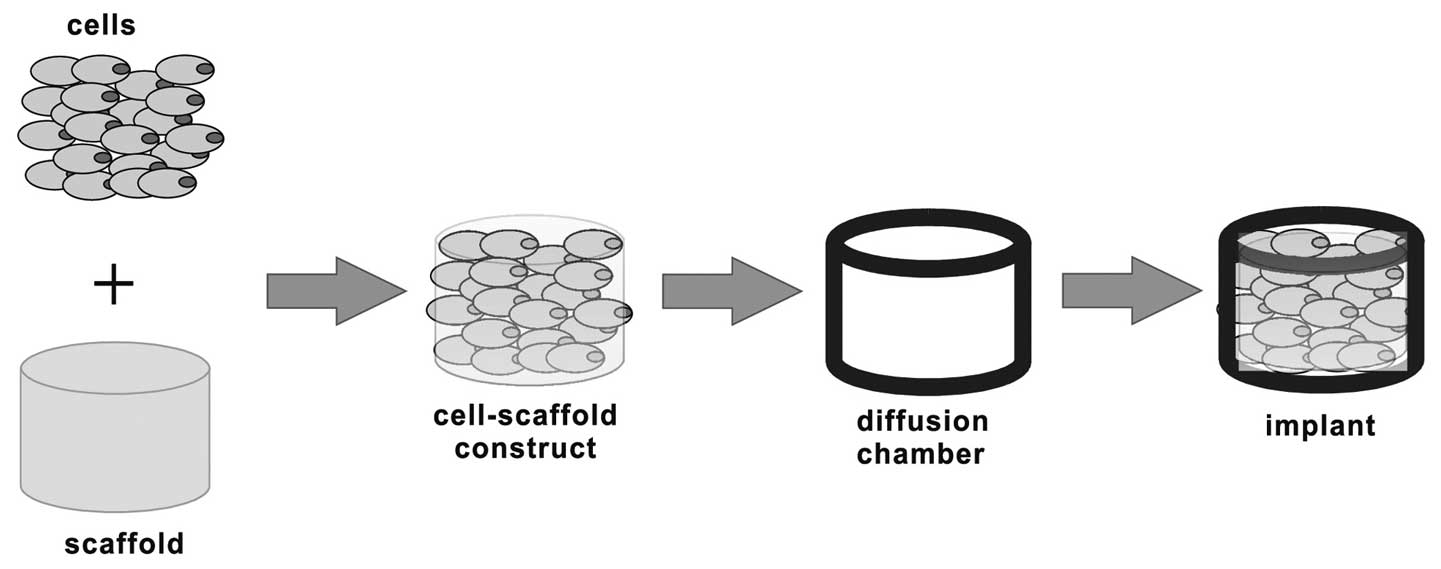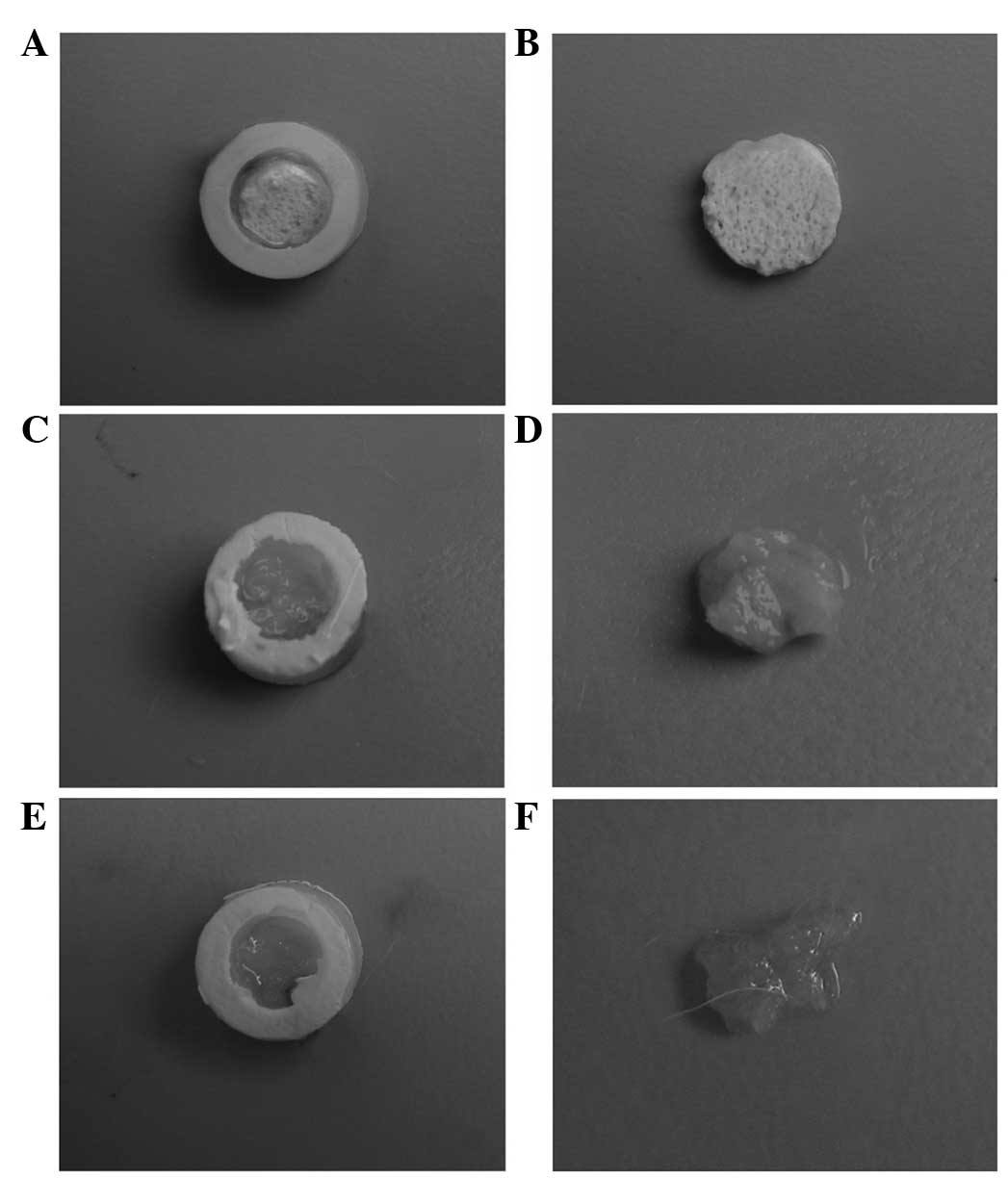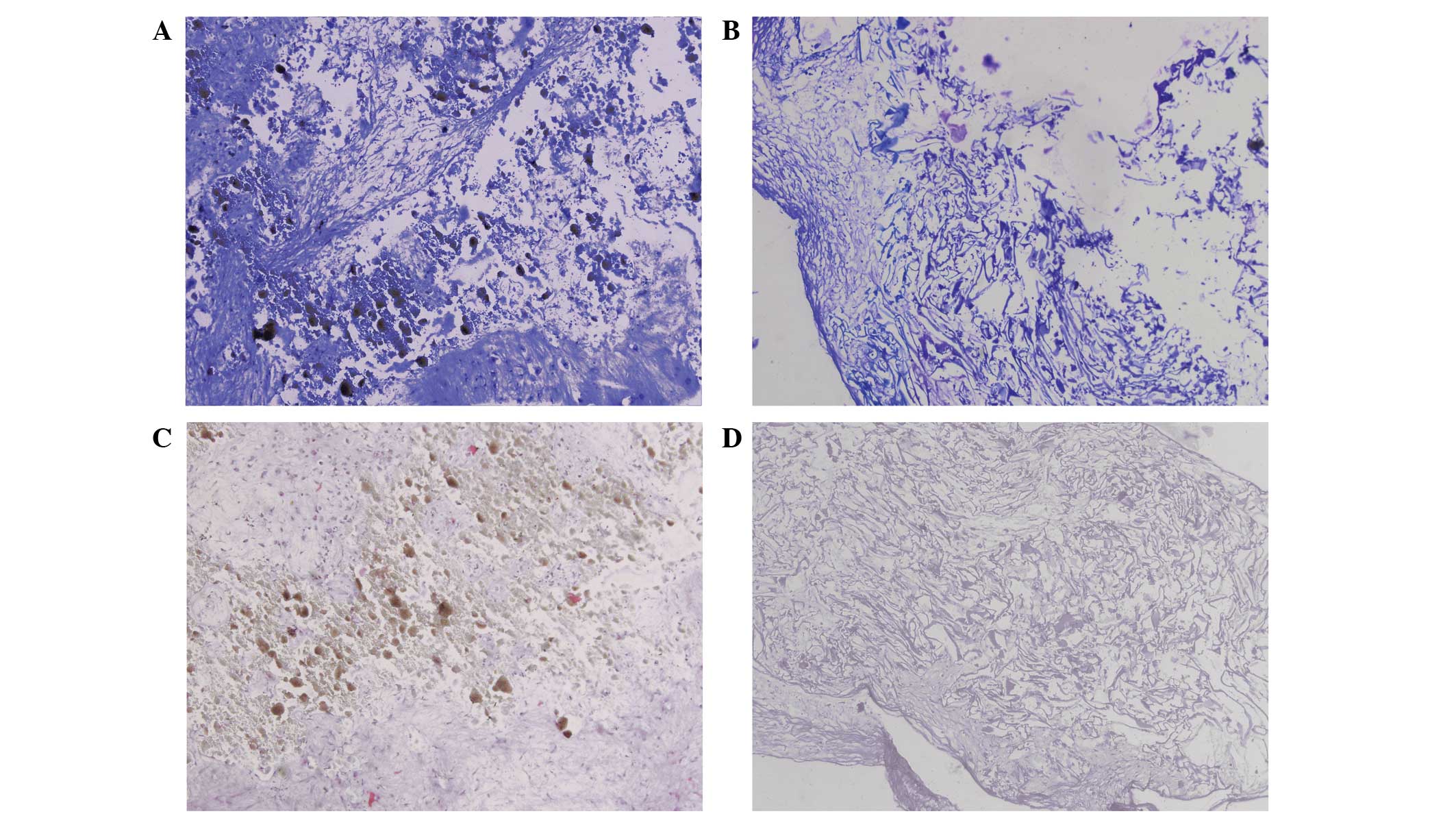Material‑induced chondrogenic differentiation of mesenchymal stem cells is material‑dependent
- Authors:
- Li Zheng
- Jinsong Yang
- Hongsong Fan
- Xingdong Zhang
View Affiliations
Affiliations: Medical and Scientific Research Center, Guangxi Medical University, Nanning, Guangxi 530021, P.R. China, Osteopathy Ward of The First Affiliated Hospital, Guangxi Medical University, Nanning, Guangxi 530021, P.R. China, National Engineering Research Center for Biomaterials, Sichuan University, Chengdu, Sichuan 610064, P.R. China
- Published online on: February 25, 2014 https://doi.org/10.3892/etm.2014.1583
-
Pages:
1147-1150
Metrics: Total
Views: 0 (Spandidos Publications: | PMC Statistics: )
Metrics: Total PDF Downloads: 0 (Spandidos Publications: | PMC Statistics: )
This article is mentioned in:
Abstract
Certain materials may mimic natural cartilage to provide an amenable cellular microenvironment for the chondrogenic differentiation of mesenchymal stem cells. The chondrogenic differentiation of bone marrow mesenchymal stem cells (BMSCs) has been demonstrated to be induced by collagen‑based hydrogels in vivo, but whether the induction is material‑driven or self‑differentiation has not been elucidated. In the present study, BMSCs were encapsulated in porous materials, namely, a biphasic calcium phosphate ceramic (BCP), silk fibroin protein matrix (SFP) and collagen sponge (CS), to further study the chondrogenic effects of various materials. Diffusion chambers that allow the body fluid to permeate and deter the host cells from invasion were also loaded with the cell‑scaffold constructs. Chambers containing the scaffold‑BMSC composites were implanted subcutaneously in the dorsa of rabbits. The specimens in the chamber were harvested for histological and immunohistochemical analyses eight weeks after implantation. The results showed that no chondrogenic differentiation of the BMSCs occurred when the BMSCs were encapsulated in BCP, SFP and CS, indicating that chondrogenesis induced by materials is material‑dependent and that these particular porous materials are not suitable for inducing chondrogenesis. However, the diffusion chamber was effective in preventing host immune rejection, host cell invasion and vascular invasion. The results are likely to serve as a valuable clinical reference when selecting an appropriate scaffold for cartilage repair.
View References
|
1
|
Kuroda R, Ishida K, Matsumoto T, et al:
Treatment of a full-thickness articular cartilage defect in the
femoral condyle of an athlete with autologous bone-marrow stromal
cells. Osteoarthritis Cartilage. 15:226–231. 2007. View Article : Google Scholar : PubMed/NCBI
|
|
2
|
Redman SN, Oldfield SF and Archer CW:
Current strategies for articular cartilage repair. Eur Cell Mater.
9:23–32. 2005.PubMed/NCBI
|
|
3
|
Mobasheri A, Csaki C, Clutterbuck AL,
Rahmanzadeh M and Shakibaei M: Mesenchymal stem cells in connective
tissue engineering and regenerative medicine: applications in
cartilage repair and osteoarthritis therapy. Histol Histopathol.
24:347–366. 2009.PubMed/NCBI
|
|
4
|
Wang Y, Blasioli DJ, Kim HJ, Kim HS and
Kaplan DL: Cartilage tissue engineering with silk scaffolds and
human articular chondrocytes. Biomaterials. 27:4434–4442. 2006.
View Article : Google Scholar : PubMed/NCBI
|
|
5
|
Hwang NS, Varghese S and Elisseeff J:
Cartilage tissue engineering. Stem Cell Assays. Vemuri MC: 407.
Humana Press; Totowa, NJ: pp. 351–373. 2007, View Article : Google Scholar : PubMed/NCBI
|
|
6
|
Lutolf MP and Hubbell JA: Synthetic
biomaterials as instructive extracellular microenvironments for
morphogenesis in tissue engineering. Nat Biotechnol. 23:47–55.
2005. View
Article : Google Scholar : PubMed/NCBI
|
|
7
|
Zheng L, Fan HS, Sun J, et al:
Chondrogenic differentiation of mesenchymal stem cells induced by
collagen-based hydrogel: an in vivo study. J Biomed Mater Res A.
93:783–792. 2010.PubMed/NCBI
|
|
8
|
Zheng L, Sun J, Chen X, et al: In vivo
cartilage engineering with collagen hydrogel and allogenous
chondrocytes after diffusion chamber implantation in
immunocompetent host. Tissue Eng Part A. 15:2145–2153. 2009.
View Article : Google Scholar : PubMed/NCBI
|
|
9
|
Zheng L, Sun J, Li B, Zhou W, Fan H and
Zhang X: Comparative study of collagen hydrogels modified in two
ways using the model of ectopic cartilage construction with
diffusion-chamber in immunocompetent host. J Appl Biomater Funct
Mater. Jul 30–2012.(Epub ahead of print). View Article : Google Scholar
|
|
10
|
Fujisato T, Sajiki T, Liu Q and Ikada Y:
Effect of basic fibroblast growth factor on cartilage regeneration
in chondrocyte-seeded collagen sponge scaffold. Biomaterials.
17:155–162. 1996. View Article : Google Scholar : PubMed/NCBI
|
|
11
|
Gundle R, Joyner CJ and Triffitt JT: Human
bone tissue formation in diffusion chamber culture in vivo by
bone-derived cells and marrow stromal fibroblastic cells. Bone.
16:597–601. 1995. View Article : Google Scholar : PubMed/NCBI
|













